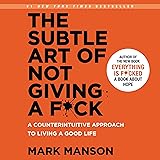These Solutions are part of NCERT Solutions for Class 12 Biology. Here we have given NCERT Solutions for Class 12 Biology Chapter 10 Microbes in Human Welfare
Question 1.
Bacteria cannot be seen with the naked eyes, but these can be seen with the help of a microscope. If you have to carry a sample from your home to your biology laboratory to demonstrate the presence of microbes under a microscope, which sample would you carry and why?
Solution:
Curd.
Question 2.
Give examples to prove that microbes release gases during metabolism.
Solution:
- Making of dough for bread, dosa, and idli with the help of fermenting microbes. Heat expels the gases and makes the food spongy.
- Production of biogas
Question 3.
In which food would you find lactic acid bacteria? Mention some of their useful applications.
Solution:
Curd. LAB (Lactic Acid Bacteria) produce acids that coagulate and partially digest the milk protein. LAB also play very beneficial role in the stomach to check disease-causing microbes.
Question 4.
Name some traditional Indian foods made of wheat, rice, and Bengal gram (or their products) which involve use of microbes.
Solution:
Idli, Dhokla, Dosa. Several food items such as dosa, idli, jalebi and bread are prepared by fermentation process in which one or more kinds of microbes are used.
Question 5.
In which way have microbes played a major role in controlling diseases caused by harmful bacteria?
Solution:
Microbes are very useful to combat disease-causing harmful bacteria. A number of antibiotics have been isolated from microorganisms. An antibiotic is a substance which in low concentration inhibits the growth and metabolic activity of pathogenic organisms without harming the host. Penicillin was the first antibiotic to be discovered by Alexander Fleming from fungus Penicillium notation. Antibiotics are obtained from lichens, fungi, eubacteria, and actinomycetes. Some common antibiotics and their sources are as follows :
- Polymyxin – Bacillus polymyxa
- Chloramphenicol – Streptomyces venezuelae
- Neomycin – Streptomyces fradiae
- Tetracycline (Terramycin) – Streptomyces rimosus
- Cephalosporin – Cephalosporium acremonium
Question 6.
Name any two species of fungus, which are used in the production of the antibiotics
Solution:
Penicillium notatum provides antibiotic penicillin and antibiotic fumagillin is obtained from Aspergillus fumigatus.
Question 7.
What is sewage? In which way can sewage be harmful to us?
Solution:
The wastewater containing large amounts of organic matter and microbes is called sewage. The sewage contains many harmful pathogens. It will pollute the natural water bodies like rivers and streams if it is released into them. This will in turn cause the spreading of many communicable diseases which are transmitted through contaminated food and water.
Question 8.
What is the key difference between primary and secondary sewage treatment?
Solution:
Primary (1°) treatment is a physical process that involves for removal of particulate as settleable particles. Secondary (2°) treatment is purely a biological treatment involving microbial oxidation.
Question 9.
Do you think microbes can also be used as a source of energy? If yes, how?
Solution:
Biogas is a mixture of gas containing methane, hydrogen sulphide and carbon dioxide. Methane is the predominant gas. It is produced by microbial activity and is used as a source of energy. The types of gases produced depend upon the types of organic materials they (microbes) use. The bacteria grow anaerobically on cellulose, produce a large amount of methane along with hydrogen and carbon dioxide. These bacteria are collectively called methanogens.
One of the common methanogens is Methanobacterium. Methanogens are commonly found in sewage. They are also found in the rumen (a chamber of the compound stomach) of cattle where a large amount of cellulosic food is present. These bacteria help in the breakdown of cellulose and thus play a vital role in digestion (symbiotic digestion). Thus, the excreta (dung) of cattle, commonly called gobar can be used for the production of biogas and hence called gobar gas.
Question 10.
Microbes can be used to decrease the use of chemical fertilizers and pesticides. Explain how this can be accomplished.
Solution:
Due to its hazardous nature and anti-environmental effect the use of chemical fertilisers and chemical insecticides are very illegitimate. The development of biofertilisers and bioinsecticides has enabled us to reduce the use of chemical fertilisers and chemical insecticides. Microbes are very important biological agents as biofertilisers and biopesticides.
Microbes as biofertilisers
- Free-living nitrogen-fixing bacteria – Azotobactcr, Clostridium.
- Free-living nitrogen-fixing cyanobacteria – Anabaena, Nostoc.
- Symbiotic nitrogen-fixing bacteria – Rhizobium
- Symbiotic nitrogen-fixing cyanobacteria – Azolla – Anabaena
- Mycorrhiza – symbiotic association between fungi and roots of a higher plant.
Microbes as bio-pesticides:
Biopesticides are that biological agents that are used to control weeds, insects, and pathogens. The microorganisms used as biopesticides are viruses, bacteria, protozoa, fungi, and mites. Some of the biopesticides are being used at a commercial scale. Most important example is the soil bacterium Bacillus thuringiensis (Bt). Spores of this bacterium produce the insecticidal Cry protein. This bacterium was the first biopesticide to be used on a commercial scale in the world. Through the use of genetic engineering, the scientists have introduced the B. thuringiensis toxin gene into plants. Such plants are resistant to attack by insect pests.
Question 11.
Three water samples namely river water, untreated sewage water and secondary effluent discharged from a sewage treatment plant were subjected to BOD test. The samples were labelled A, B and C; but the laboratory attendant did not note which was which. The BOD values of the three samples A, B and C were recorded as 20mg/L, 8mg/L and 400mg/L, respectively. Which sample of the water is most polluted? Can you assign the correct label to each assuming the river water is relatively clean?
Solution:
If the BOD level of A, B and C are 20 mg/L, 8 mg/L and 400 mg/L, the /most polluted one is sample ‘C’ i.e., untreated sewage water. Sample B is the least polluted and it is river water. Sample A is secondary effluent discharged from a treatment plant.
Question 12.
Find out the name of the microbes from which Cyclosporin A (an immunosuppressive drug) and Statins (blood cholesterol-lowering agents) are obtained.
Solution:
Cyclosporin A – Trichoderma polysporum. Statin – Monascus purpureus.
Question 13.
Find out the role of microbes in the following:
- Single-cell protein (SCP)
- Soil
Solution:
1. Single-cell protein (SCP) is the protein extracted from cultivated microbial biomass. Edible mushrooms, yeast cells, and blue-green algae provide high protein resources with some medicinal effects. SCP is available in the forms of fresh cells, dry cells, tablets, or extracts.
2. The use of biological methods for controlling plant diseases and pests is called biocontrol. This method has been replaced by the indiscriminate use of chemicals used in the chemical control of pests. The chemicals used for killing pests are toxic and extremely harmful to men and domestic animals. They also pollute the environment and our crop plants.
Question 14.
Arrange the following in the decreasing order (most important first) of their importance, for the welfare of human society. Give reasons for your answer. Biogas, citric acid, penicillin and curd
Solution:
The correct order from viewpoint of human welfare should be as follows: Penicillin > biogas > citric acid > curd Penicillin is an antibiotic, which is used to combat pathogenic microorganisms. Today, we cannot imagine a world without antibiotics because antibiotics have greatly improved our capacity to treat deadly diseases such as plague, whooping cough (kali khansi), diphtheria (gal ghotu) and leprosy (kusht rog), which used to kill millions of people all over the globe. It should be given first priority.
As we are going to face a great crisis of fossil fuels in near future, biogas can be the legitimate and brilliant alternative to fossil fuels. It can be used as fuel for heating, cooking, lighting, power for irrigation and other purposes. It is considered an eco-friendly and pollution-free energy source.
Citric acid is produced through the fermentation carried out by Aspergillus niger on many carbohydrates. Citric acid is used in medicines, dyeing, mirror silvering, manufacture of ink, flavouring and preservation of food and candies.
Curd is prepared by fermentation of milk. Fermentation agents are lactic acid bacteria. Curd is more nutritious than milk as it contains a number of vitamins and organic acids.
Question 15.
How do biofertilisers enrich the fertility of the soil?
Solution:
The use of biological methods for controlling plant diseases and pests is called biocontrol. This method has been replaced by the indiscriminate use of chemicals used in the chemical control of pests. The chemicals used for killing pests are toxic and extremely harmful to men and domestic animals. They also pollute the environment and our crop plants.
We hope the NCERT Solutions for Class 12 Biology Chapter 10 Microbes in Human Welfare help you. If you have any query regarding NCERT Solutions for Class 12 Biology Chapter 10 Microbes in Human Welfare, drop a comment below and we will get back to you at the earliest.








